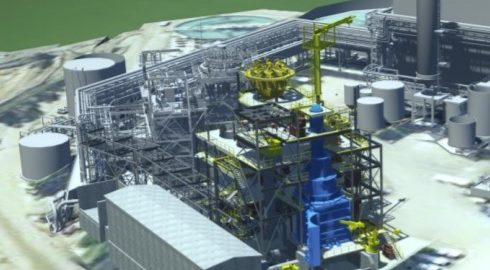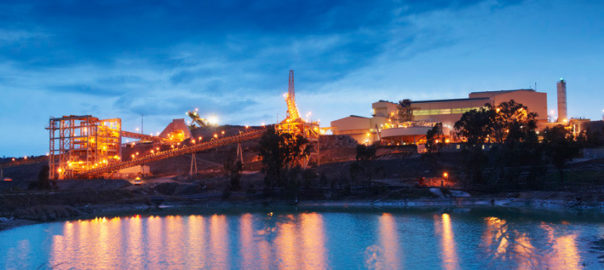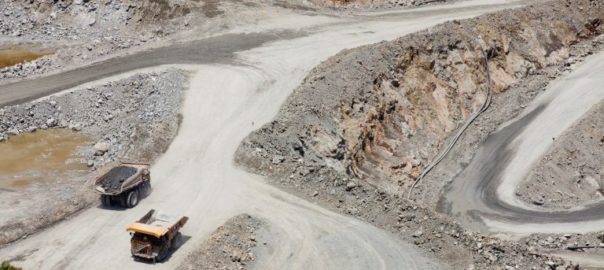Having installed the first full-scale HydroFloat™ cells for the recovery of coarse composited copper and gold at Newcrest’s Cadia Valley operation in New South Wales, Australia, in 2018, Eriez is about to help the miner boost output at the operation.
Today, the Newcrest Board approved two projects moving to the execution phase, being Stage 2 of the Cadia Expansion project and the Lihir Front End Recovery project, in PNG.
The Stage 2 Cadia Expansion project primarily comprises the addition of a second coarse ore flotation circuit in Concentrator 1 (graphic above), using Eriez’s HydroFloat technology, and equipment upgrades in Concentrator 2.
These changes are expected to see plant capacity go from 33 Mt/y to 35 Mt/y, while life of mine gold and copper recoveries could increase by 3.5% and 2.7%, respectively. Alongside this, the company was expecting a A$22/oz ($16/oz) drop in its all-in sustaining costs.
An increase in throughput capacity in Concentrator 2 from 7 Mt/y to 9 Mt/y will be achieved through crushing, grinding, cyclone, pumps and flotation upgrades; while the installation of the second Coarse Ore Flotation circuit on Concentrator 1 and additional upgrades to Concentrator 1 will facilitate an increase in throughput capacity to up to 26 Mt/y, the company said.
“Stage 1, which is already in execution, was designed to maintain production continuity at Cadia through the development of PC2-3 (the next cave development) and increase the processing capacity to 33 Mt/y,” Newcrest said. “Stage 1 comprises an upgrade to the materials handling system and debottlenecking of the Concentrator 1 comminution circuit.”
The rate of ore mined from Cadia is expected to vary over time according to draw rates, cave maturity and cave interaction as further caves are developed, according to Newcrest. From the 2027 financial year onwards, life of mine Cadia mining rates are generally expected to be in the range of 33-35 Mt/y, with an average of 34 Mt/y used for financial evaluation purposes, the company said. Higher mine production rates may be possible, subject to further studies.
At throughput rates of 34 Mt/y, gold recovery improvements from Stages 1 and 2 are expected to achieve LOM gold recoveries of 80.3% and LOM copper recoveries of 85.2% compared to Stage 1 baselines of 76.8% for gold and 82.5% for copper.
The estimated capital cost for Stage 2 is A$175 million, A$5 million lower than the October 2019 estimate, according to Newcrest, which added that timing for delivery remains on schedule, with completion expected late in its 2022 financial year.
The Lihir Front End Recovery project, meanwhile, primarily comprises the installation of flash flotation and additional cyclone capacity, as well as cyclone efficiency upgrades, to improve grinding classification and reduce gold losses through the flotation circuits, Newcrest said.
The flash flotation and cyclone upgrades target the following process improvements:
- Implement flash flotation to reduce mineral fines generated from overgrinding and send the higher-grade concentrate stream to the autoclaves; and
- Improve cyclone efficiency to achieve a reduction in unliberated coarse mineral particles entering the cyclone overflow, which are not recovered in conventional flotation.
This is projected to result in LOM gold recoveries increasing by 1.2% and incremental LOM gold production increasing by 244,000 oz. It came with an estimated capital cost of A$61 million.










